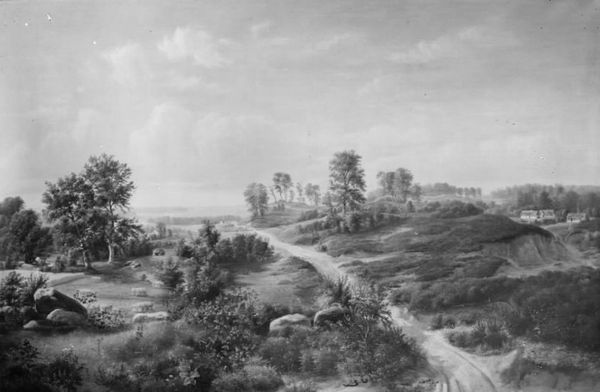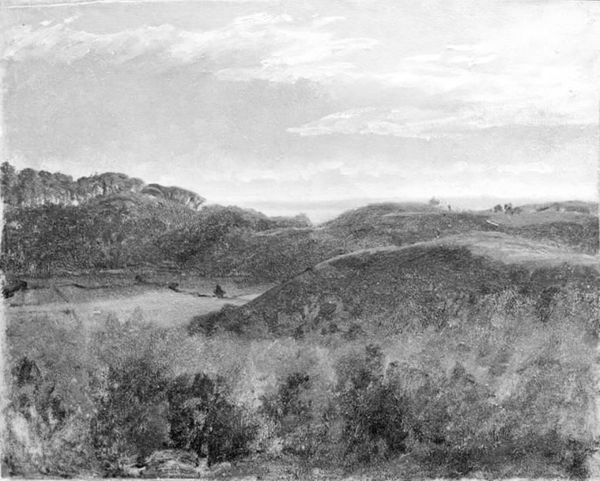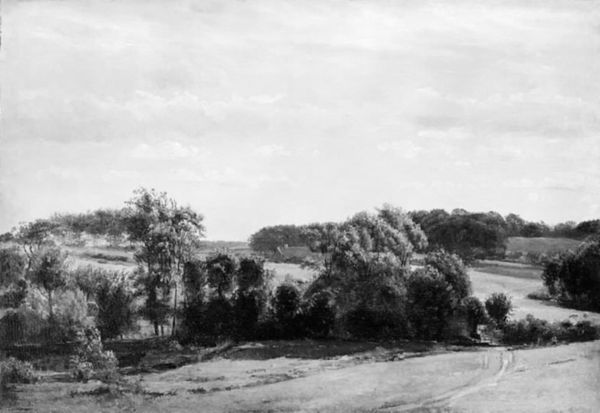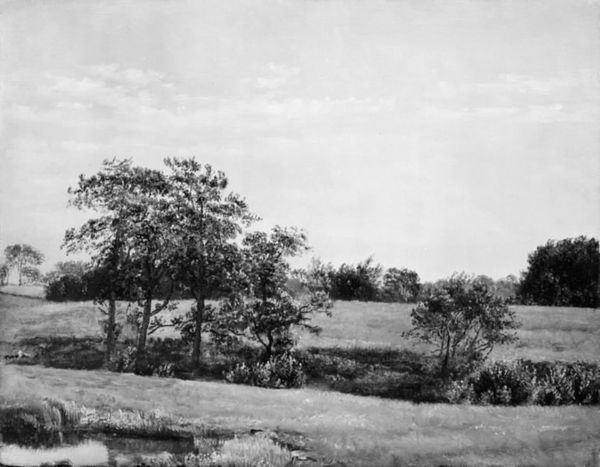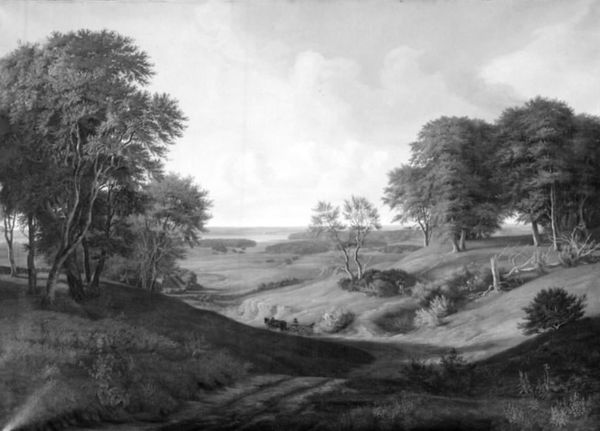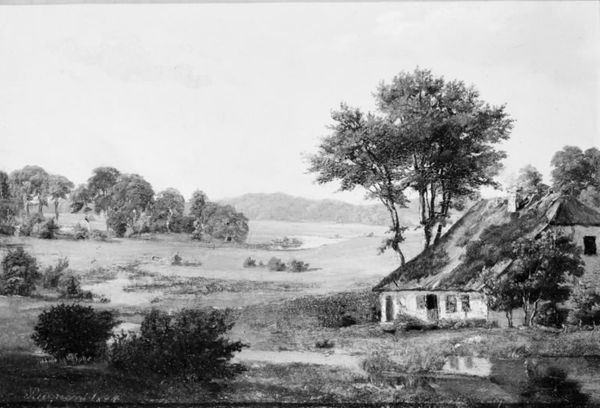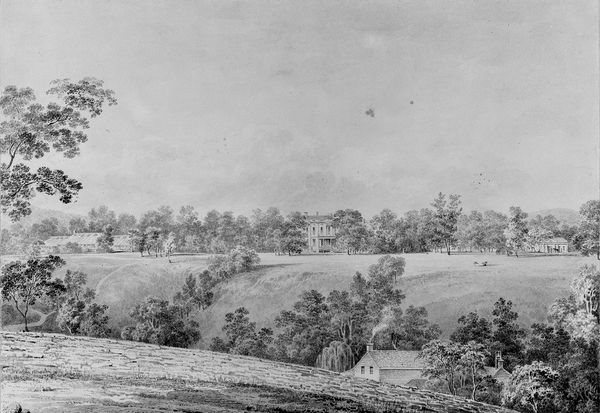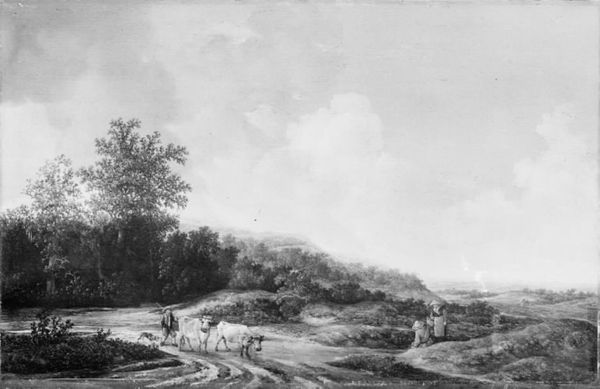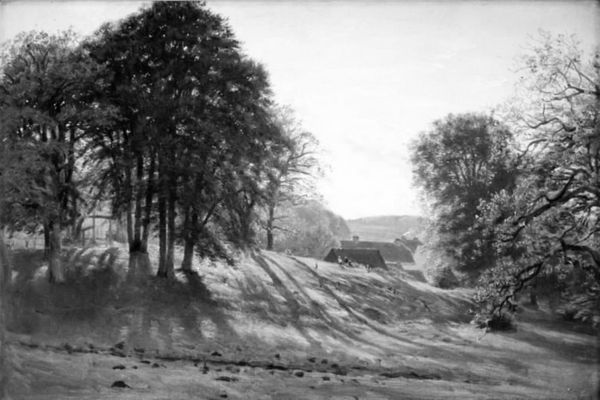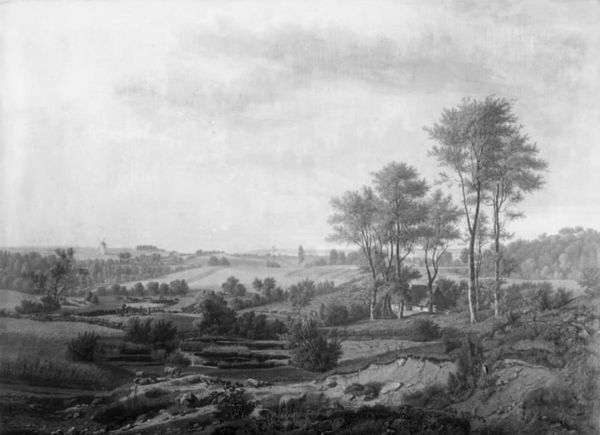
North Zealand Landscape at Lake Arre where King Valdemar the Victor built Dronningholm Castle in Memory of his Queen Dagmar 1841
0:00
0:00
painting, plein-air
#
black and white photography
#
painting
#
plein-air
#
landscape
#
monochrome colours
#
romanticism
#
black and white
#
monochrome photography
#
monochrome
#
realism
Dimensions: 85.5 cm (height) x 118 cm (width) (Netto)
Editor: So, this is Thorald Læssøe’s "North Zealand Landscape at Lake Arre where King Valdemar the Victor built Dronningholm Castle in Memory of his Queen Dagmar", created in 1841. It looks like a plein-air painting, but I find myself strangely drawn to the materiality, even though it is displayed in monochrome. How do you see this work? Curator: Considering this piece, I'm drawn to consider the availability of paint during that time and where Læssøe chose to use it most carefully. Given the era and subject matter, what was Læssøe saying by presenting a Romantic-era castle, by employing a more 'realist' mode? It prompts us to investigate both how he obtained the materials for painting and the message he sought to disseminate to viewers. What statement did the materials help him craft? Editor: That’s interesting – I hadn't considered the cost and procurement of paint. So, it wasn't just about depicting a scene; the act of plein-air painting itself was… a statement? Curator: Precisely. And more than that. How does he utilize the raw materiality of his craft in a period undergoing industrial shifts to comment on landscape? Are the paint's ingredients ethically produced? What of the tools of its construction? Where was his studio versus this castle, versus other artists? Editor: That puts the castle—and its symbolic weight—in a totally new light. It’s not just about royal history, but about the real human cost embedded in every brushstroke! Curator: It's crucial to remember that the Romanticism of the time also masked harsh realities. Looking at paintings through a materialist lens peels back the layers of idyllic representation, exposing labour conditions of not only its own production but how these elements factored in Danish culture at this time. The production of beauty is frequently entangled with historical imbalances in social class. Editor: This makes me consider Romantic landscapes, and all art actually, through an ethical lens moving forward. Curator: Exactly, it forces us to reckon with the physical means that render these landscape paintings and to what end this ‘beauty’ has been made consumable by us all today.
Comments
No comments
Be the first to comment and join the conversation on the ultimate creative platform.
